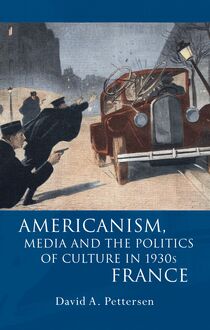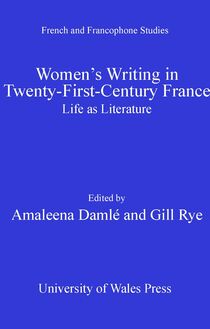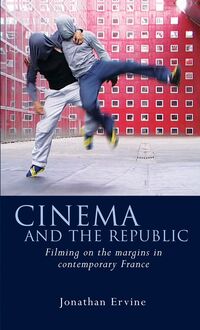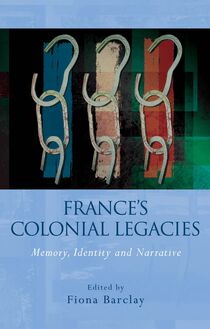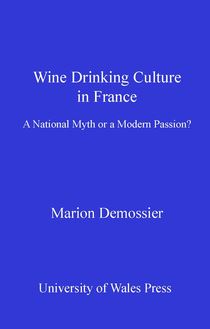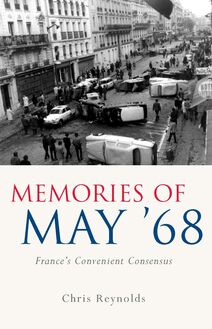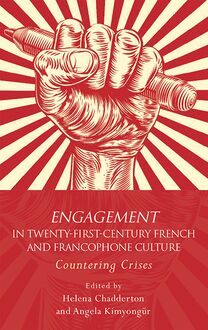Adapting Nineteenth-Century France , livre ebook
127
pages
English
Ebooks
2015
Vous pourrez modifier la taille du texte de cet ouvrage
Obtenez un accès à la bibliothèque pour le consulter en ligne En savoir plus
Découvre YouScribe en t'inscrivant gratuitement
Découvre YouScribe en t'inscrivant gratuitement
127
pages
English
Ebooks
2015
Vous pourrez modifier la taille du texte de cet ouvrage
Obtenez un accès à la bibliothèque pour le consulter en ligne En savoir plus
Publié par
Date de parution
15 mai 2015
Nombre de lectures
1
EAN13
9781783165575
Langue
English
Adapting Nineteenth-Century France uses the output of six canonical novelists and their recreations in a variety of media to push for a re-conceptualisation of our approach to the study of adaptation. The works of Balzac, Hugo, Flaubert, Zola, Maupassant and Verne reveal themselves not as originals to be defended from adapting hands, but fashioned from the adapted voices of a host of earlier artists, moments and media. The text analyses re-workings of key nineteenth-century texts across time and media in order to underline the way in which such re-workings cast new light on many of their source texts and reveal the probing analysis nineteenth-century novelists undertake in relation to notions of originality and authorial borrowing. Moreover, Adapting Nineteeth-Century France traces their subsequent recreations in a comparable range of genres, encompassing key modern media of the twentieth- and twenty-first-centuries: radio, silent film, fiction, musical theatre, sound film and television.
Publié par
Date de parution
15 mai 2015
Nombre de lectures
1
EAN13
9781783165575
Langue
English
FRENCH AND FRANCOPHONE STUDIES
Adapting Nineteenth-Century France
Series Editors
Hanna Diamond (University of Bath)
Claire Gorrara (Cardiff University)
Editorial Board
Ronan le Coadic (Universit Rennes 2)
Nicola Cooper (Swansea University)
Colin Davis (Royal Holloway, University of London)
Didier Francfort (Universit Nancy 2)
Sharif Gemie (University of Glamorgan)
H. R. Kedward (Sussex University)
Margaret Majumdar (Univesrity of Portsmouth)
Nicholas Parsons (Cardiff University)
Max Silverman (University of Leeds)
FRENCH AND FRANCOPHONE STUDIES
Adapting Nineteenth- Century France
Literature in Film, Theatre, Television, Radio and Print
KATE GRIFFITHS and ANDREW WATTS
Kate Griffiths and Andrew Watts, 2013
All rights reserved. No part of this book may be reproduced in any material form (including photocopying or storing it in any medium by electronic means and whether or not transiently or incidentally to some other use of this publication) without the written permission of the copyright owner except in accordance with the provisions of the copyright, designs and patents act 1988. Applications for the copyright owner s written permission to reproduce any part of this publication should be addressed to the University of Wales Press, 10 Columbus walk, Brigantine place, Cardiff, CF10 4UP.
www.uwp.co.uk
British Library Cataloguing-in-Publication Data
A catalogue record for this book is available from the British Library.
ISBN 13 978-1-78316-558-2
ISBN e-book 978-1-78316-558-2
The right of Kate Griffiths and Andrew Watts to be identified as authors of this work has been asserted by him in accordance with sections 77 and 78 of the Copyright, Designs and Patents Act 1988.
Cover image: Around the World in 80 Days, 1956 Moviestore Collection Ltd
CONTENTS
Series Editors Preface
Acknowledgements
Introduction: Kate Griffiths
Chapter One: Labyrinths of Voices: Emile Zola, Germinal and Radio Kate Griffiths
Chapter Two: Diamond Thieves and Gold Diggers: Balzac, Silent Cinema and the Spoils of Adaptation Andrew Watts
Chapter Three: Fragmented Fictions: Time, Textual Memory and the (Re)Writing of Madame Bovary Andrew Watts
Chapter Four: Les Mis rables, Theatre and the Anxiety of Excess Andrew Watts
Chapter Five: Chez Maupassant: The (In)Visible Space of Television Adaptation Kate Griffiths
Chapter Six: Le Tour du monde en quatre-vingts jours: Verne, Todd, Coraci and the Spectropoetics of Adaptation Kate Griffiths
Conclusion: Andrew Watts
Bibliography
Series Editors Preface
This series showcases the work of new and established scholars working within the fields of French and francophone studies. It publishes introductory texts aimed at a student readership, as well as research-orientated monographs at the cutting edge of their discipline area. The series aims to highlight shifting patterns of research in French and francophone studies, to re-evaluate traditional representations of French and francophone identities and to encourage the exchange of ideas and perspectives across a wide range of discipline areas. The emphasis throughout the series will be on the ways in which French and francophone communities across the world are evolving into the twenty-first century.
Hanna Diamond and Claire Gorrara
Acknowledgements
I would first like to thank Swansea University for the research leave that made the first stage of this monograph possible. A variety of colleagues have helped this project in its various stages. I am very grateful for their time, patience and insight. Particular thanks are owed to Sarah Lewis for her forbearance, to Roger Bickerton and Nigel Deacon for their help locating Zola adaptations in radio, to Diana Griffiths for her generosity with radio scripts and insight into radio in practical terms, to Bradley Stephens and Elaine Canning for reading the various versions of my chapters, to Tim Unwin for sharing his knowledge of flying machines, to Clair Rowden for her musical advice and to Rob Stone for his help with all things media related. Finally, I am grateful to be able to record again in print my thanks to Margaret and John Griffiths and to Richard Sheppard for their backup at all times. The biggest thanks of all, though, go to Genevieve Sheppard whose drawings grace every draft of this book and made me smile every time I picked it up.
Kate Griffiths
This monograph owes much to the University of Birmingham, and to the combination of research leave and teaching relief that enabled me to begin work on the project during the 2010-11 session. I would like to record my special thanks to those friends and colleagues who have supported this book in a variety of ways. I am particularly indebted to my co-author, Kate Griffiths, who encouraged me to develop my interest in adaptation, and who has been an invaluable source of advice at every stage. Michelle Cheyne, Ceri Crossley, Tim Unwin and Dennis Wood have all read and commented on my chapters, and I am very grateful for their time, generosity and scholarly insight. I am equally delighted to be able to express my thanks to Posy Simmonds for making the visit to Birmingham that inspired my work on Flaubert, and for responding patiently to my questions about Gemma Bovery. As ever, I extend my warmest thanks to John and Janet Watts, for never failing to ask when this book would be finished, and to Claire Watts, for her patience and support in helping me towards that goal.
Andrew Watts
Introduction
KATE GRIFFITHS
The French nineteenth century and its cultural products have long fascinated those who adapt. Adaptation, as a cultural phenomenon, is key to the artistic life of this era, characterised as it is by cross-media/ genre dialogues as novels, plays, operas and paintings nourish each other adaptively. Zola s Nana (1880) offers a powerful case in point. The novel mocks, in adapted form, the operettas of Offenbach (La Belle H l ne is recalled in Nana s abysmal La Blonde V nus). It is comparably indebted to the painting of its heroine done by Edouard Manet in the winter of 1876, based on Nana s brief appearance in Zola s previous novel L Assommoir, a painting it ekphrastically reproduces in its narrative. 1 Having nourished itself on other works of art, it is perhaps then appropriate that Zola s novel was subsequently adapted into a host of other forms. With Zola s consent it was adapted into theatre at the hands of William Busnach to mediocre reviews. 2 Without Zola s consent, the novel s heroine and the superimposed identity of the actress playing her on stage (L ontine Massin) were subsequently worked and reworked in a plethora of parodies and pastiches across artistic forms and artefacts. 3 The novel triggered further art forms. Alfred de Sirven s 1880 La Fille de Nana depicted Nana s offspring rising to respectability in a novelistic rebuttal of both Zola s novel and the author s theories of heredity. Moreover, widely translated in translations which themselves deploy adaptive strategies in their composition at times, the novel found its way into a variety of languages. An 1880 version for a North American publishing house, Peterson and Brooks, underlines how often contemporary translations show nothing of this novel with its pretensions precisely to show everything. Thirteen lines describing the sensual, sexual potency of Nana s body and its ability to bring men to their knees are rendered in the following three curt lines: A murmur ran through the house. Every glass was riveted on Venus. Nana had conquered the public. Bordenave was correct. She had only to show herself as he had said. 4 Bordenave may show Nana, but this translation, driven by the commercial, legal and cultural imperatives of its own context, does not. It does, however, gesture towards the adaptive afterlives of the nineteenth-century text, a text translated, transformed and transplanted in the seemingly endless exchanges of its era.
Such adaptive urges in relation to nineteenth-century France are, though, far from the preserve of the century itself. Each of the case study novelists featured in this book, Zola, Balzac, Flaubert, Hugo, Maupassant and Verne, was not only adapted and re-adapted in his lifetime, but continues to be reinvented across time, media and nation to the present day. In 2012, the screenwriter of Larkrise to Candleford, Bill Gallagher, transposed Zola s Au Bonheur des dames into a BBC television series, swapping Paris for Newcastle, the site of the first British department store (Bainbridge s - now John Lewis). 5 Adrian Penketh s adaptation of Balzac s La Peau de chagrin aired as the Friday play on Radio 4 on 21 January 2011, the adaptor drawing out the resonances between the financial system of the novel and the monetary issues of his own contemporary era. 6 In 2011 Adam Thorpe offered what he believes is the twentieth English translation of Madame Bovary (Vintage), the previous translation of which had appeared just one year earlier. 7 Having celebrated its twenty-fifth anniversary in 2010, the ever-popular stage musical of Les Mis rables was adapted into a film in 2013 under the direction of the Oscar winner Tom Hooper, a piece in which Hugh Jackman and Russell Crowe starred. In March 2012 the adaptation by Declan Donnellan and Nick Ormerod of Maupassant s Bel-Ami, starring teen heart-throb Robert Pattinson, was released in the UK and the USA. 8 In February 2012 the complete works of Jules Verne, compacted into eighty comic minutes by performers David Furlong and Alex Kanefsky, could be viewed at the Lion and Unicorn Theatre, London. Whatever the media, nation or era, nineteenth-century France has always, it seems, made adaptive sense.
That contemporary media forms continue to adapt across the literary canon is clear. Critical debate as to the motivations for this adaptive interest is ongoing. Robert Giddings, Keith Selby and Chris Wensley suggest that our thirst for adaptations of nineteenth-century works is dri



